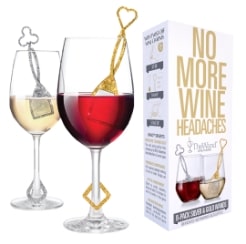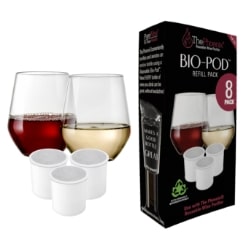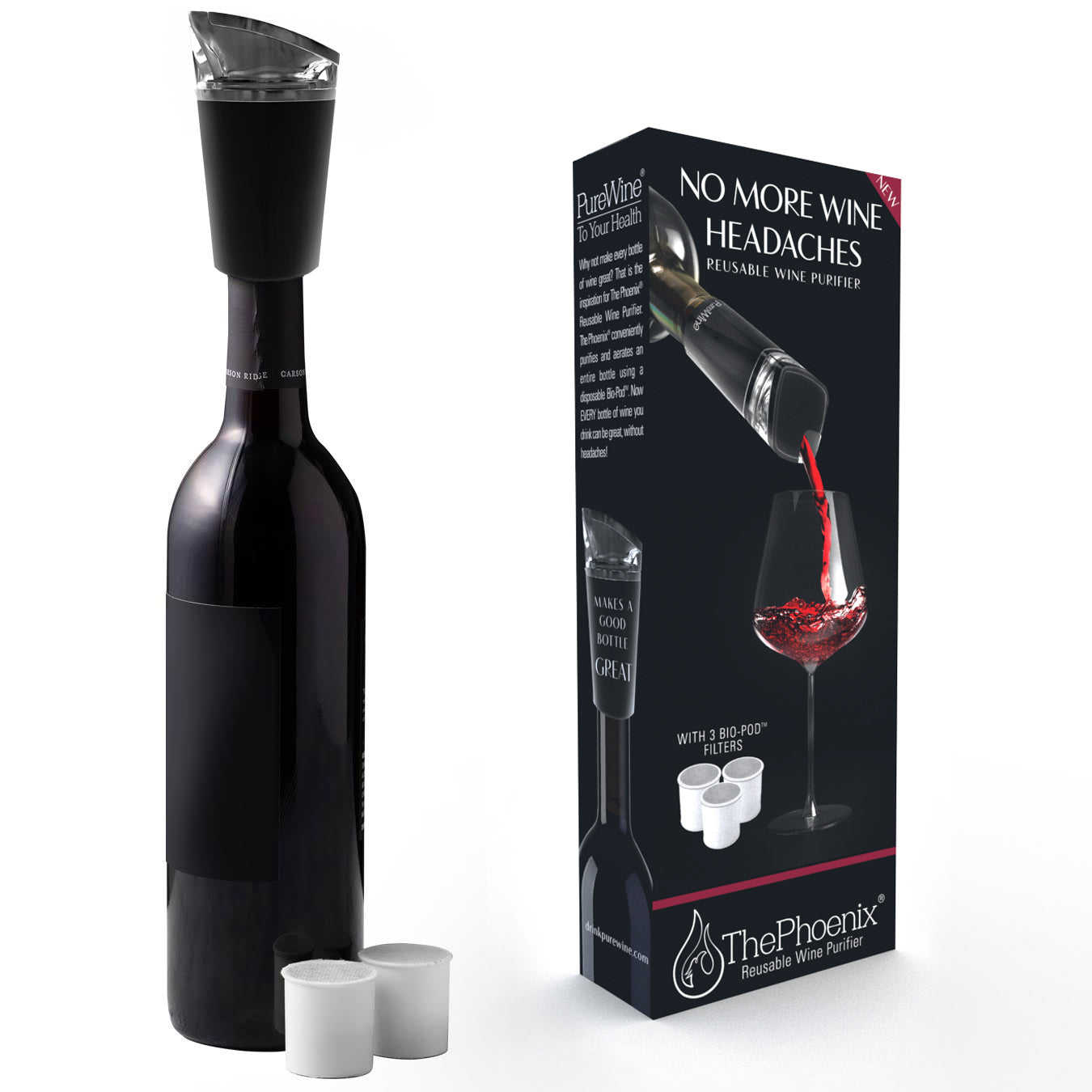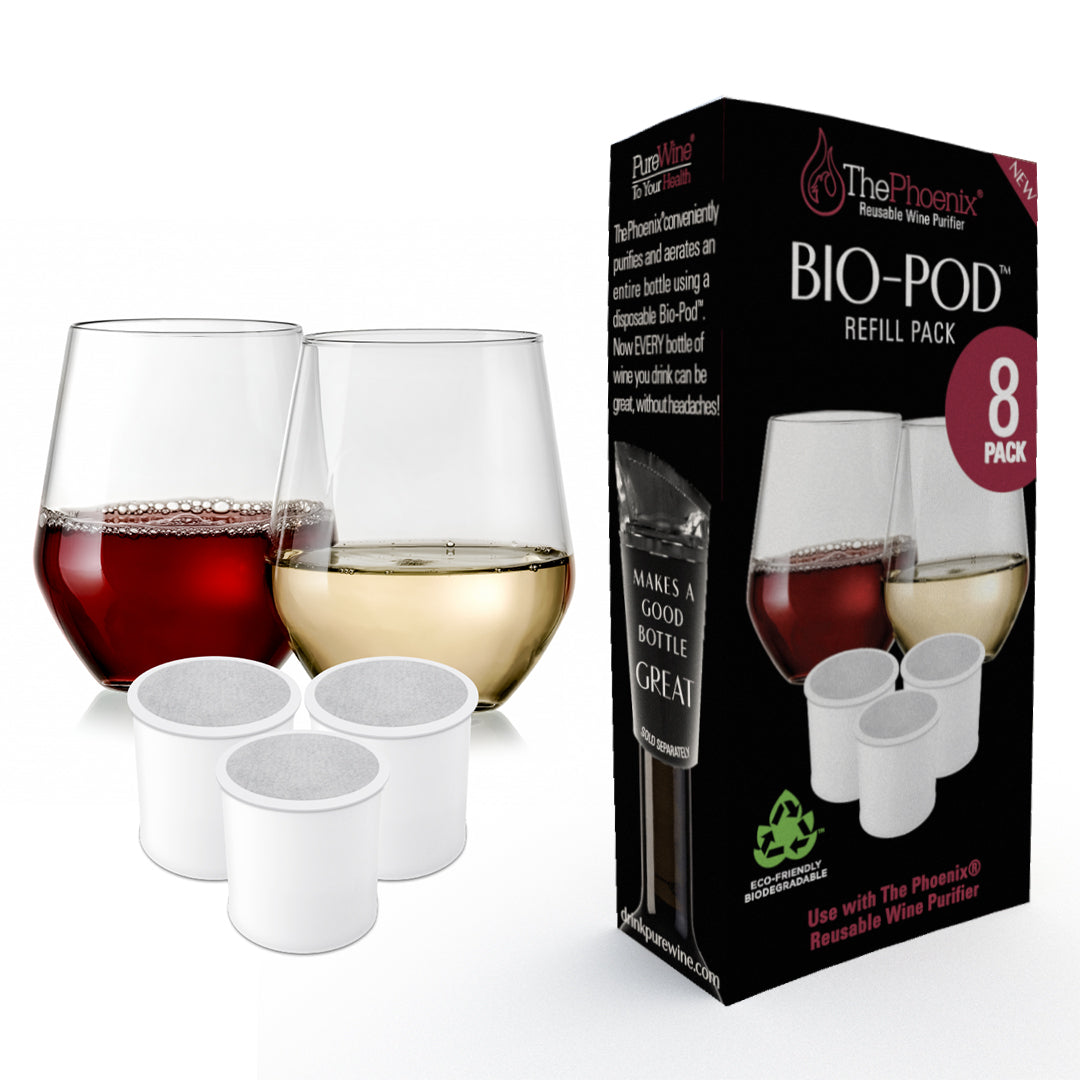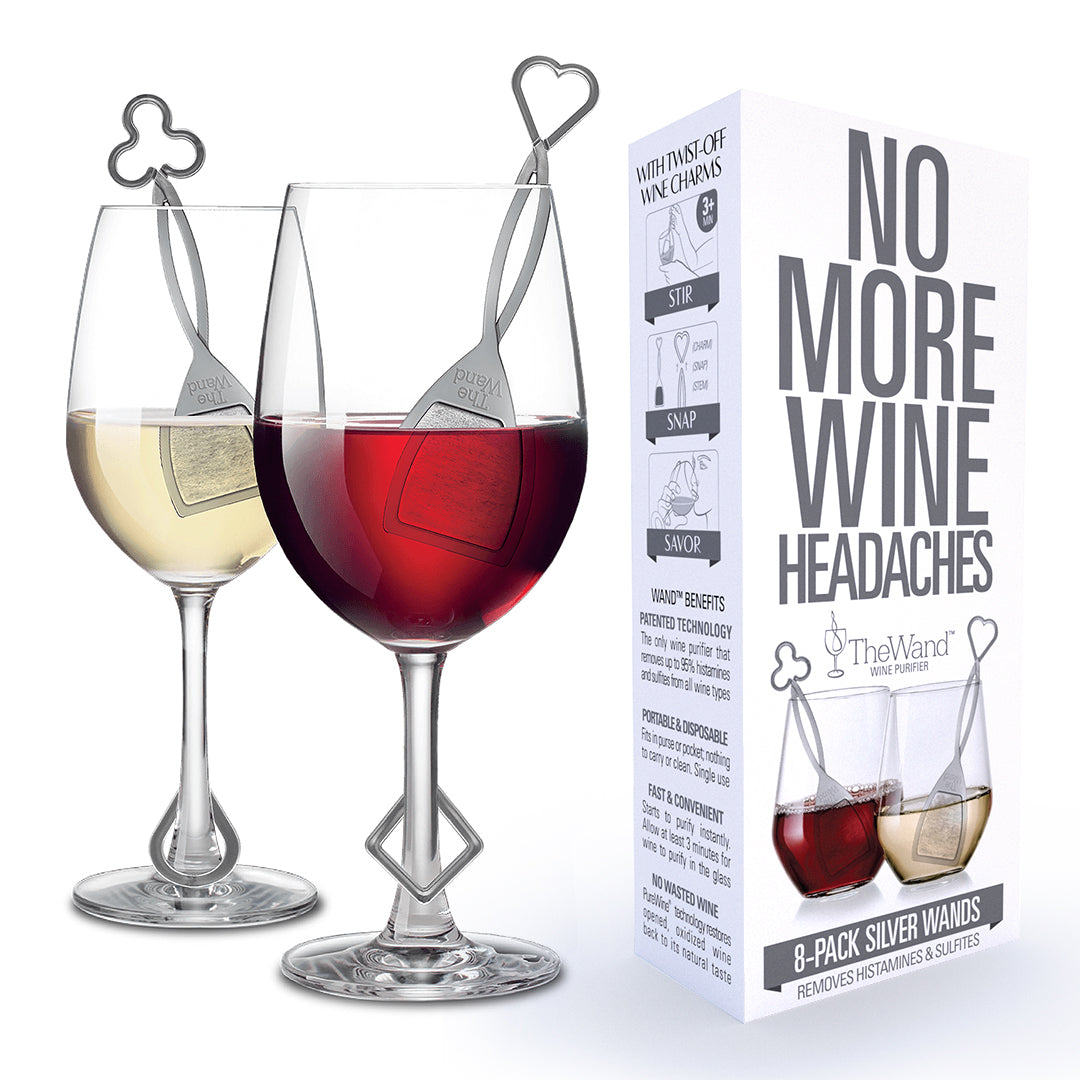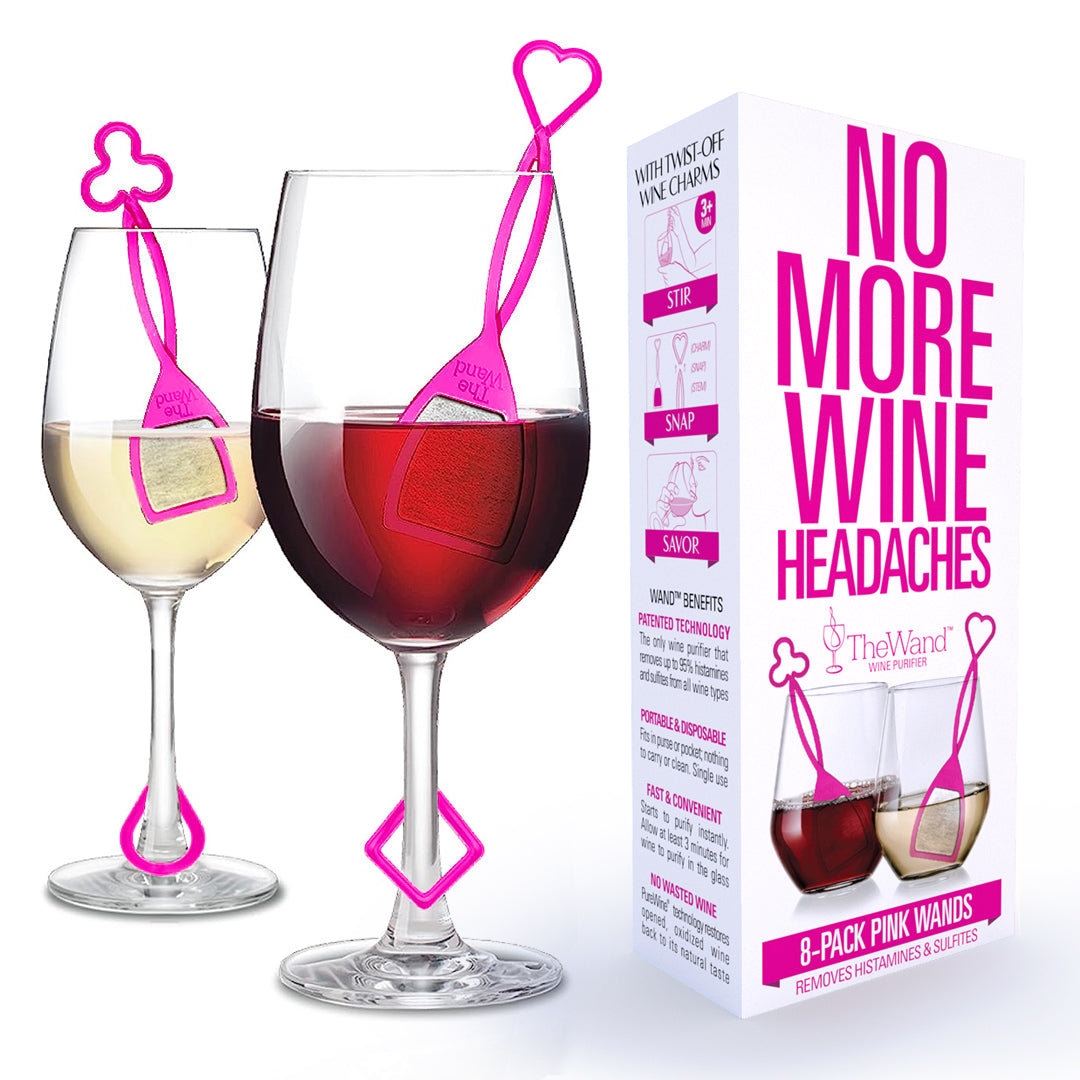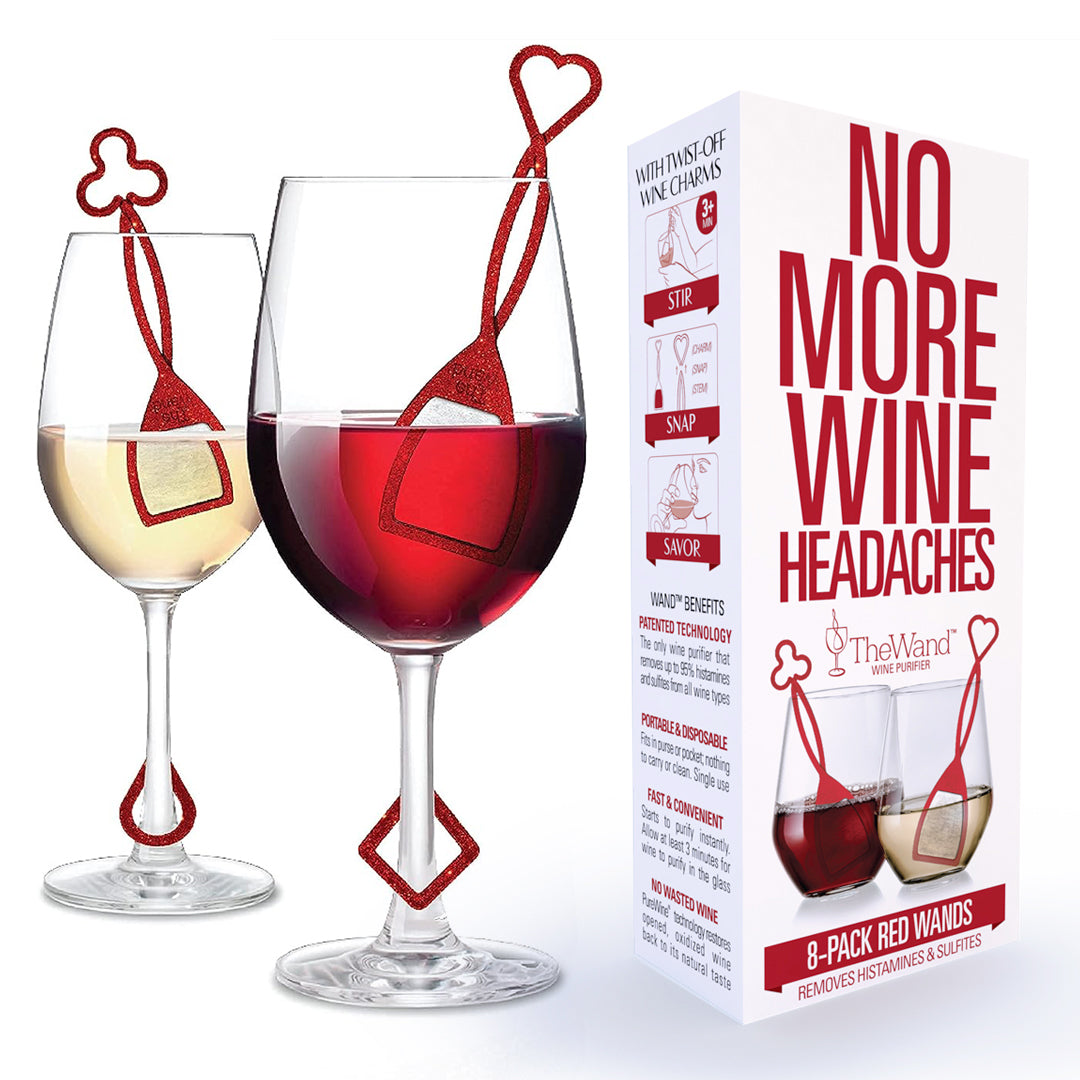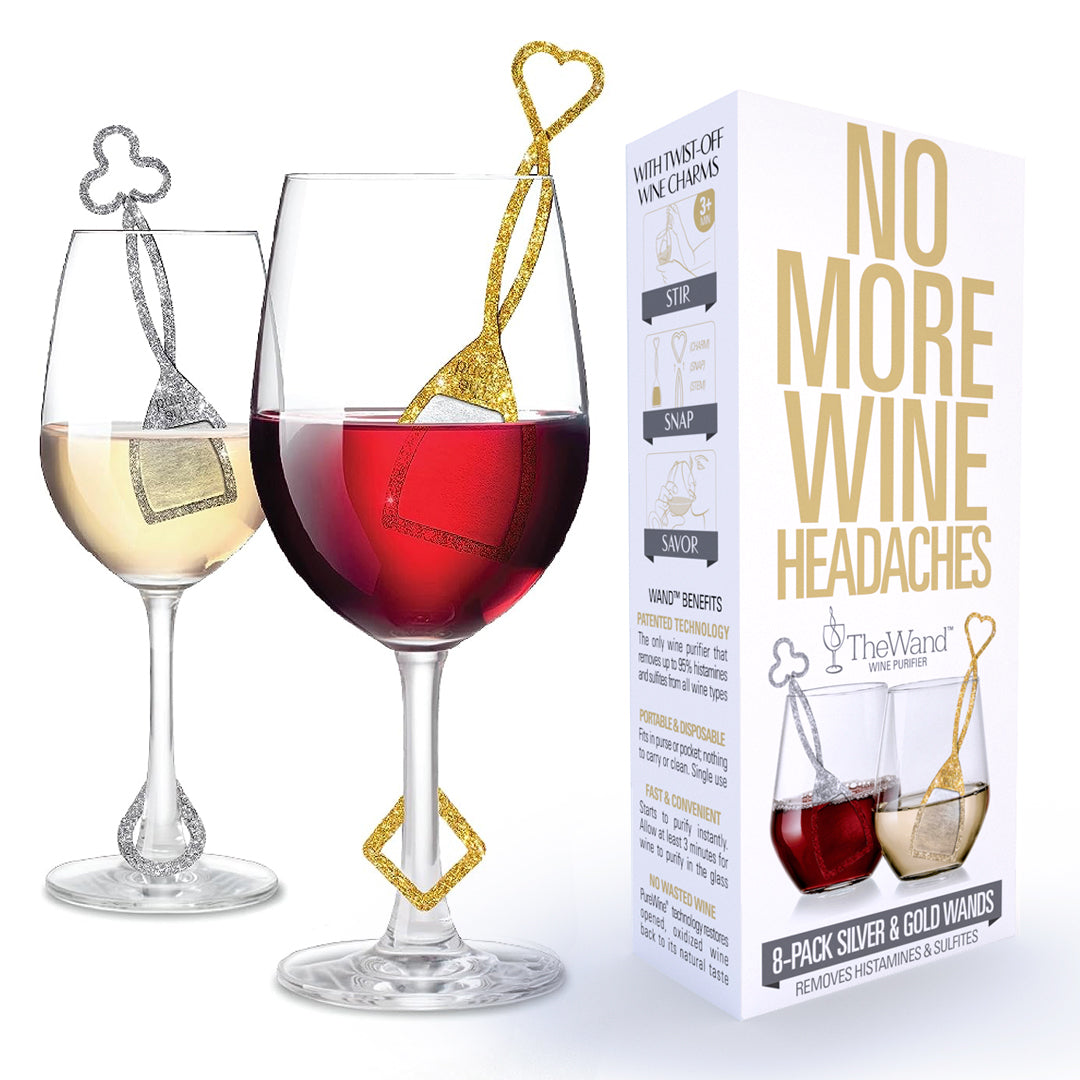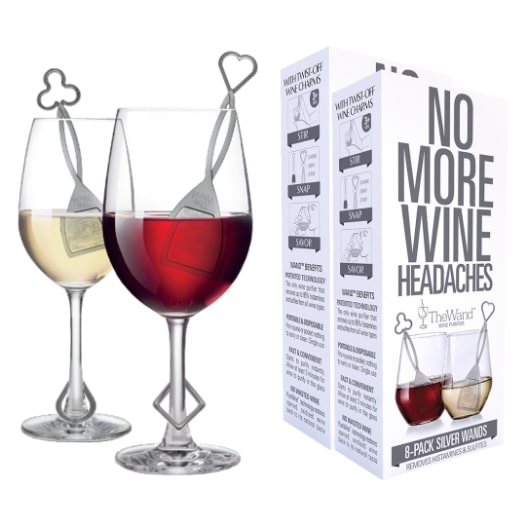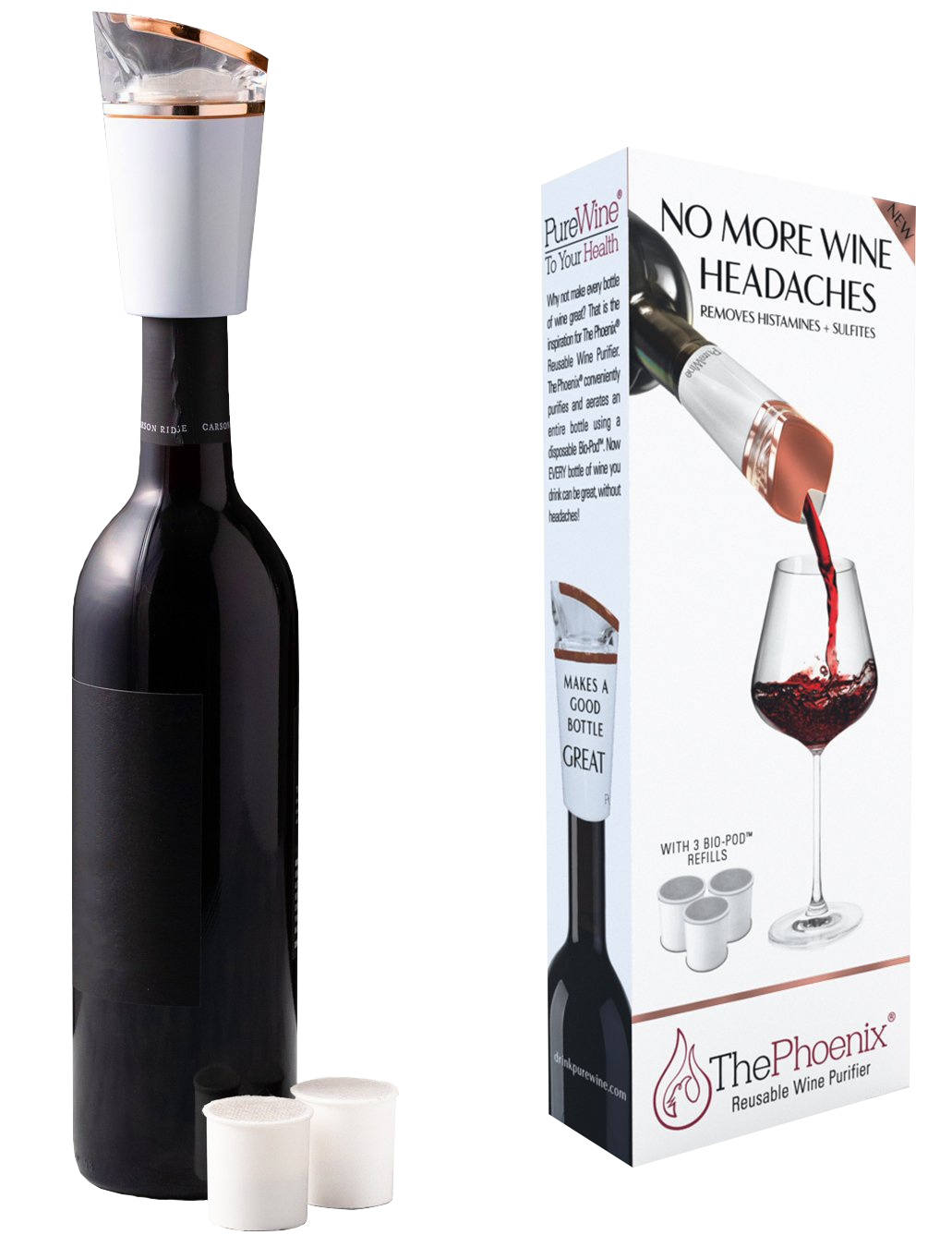Wine Aerators - All You Need to Know About Them
In this article we will go into great depth on wine aerators. We will try and answers all the questions you have about wine aerators and maybe some questions you didn't know to ask. All this with the intent to make sure you have the best wine experience possible.
Table of Contents
- Why We Love Wine
- Wine Aerators - Just a Fancy Gadget?
- What is a Wine Aerator?
- How Does an Aerator Work?
- Do Wine Aerators Work?
- What Does an Aerator do to Wine?
- Benefits of Wine Aeration
- Can You Over Aerate Wine?
- How to Use a Wine Aerator
- Wine Aerator vs. Decanter
- FAQs and Myths About Wine Aeration
- Will Aeration Fix Bad Wine?
- Do You Aerate White Wine?
- Do You Aerate Aged Wine?
- Do All Wine Aerators Work The Same Way?
- Do You Aerate Sparkling Wine?
- Do I Need an Wine Aerator?
- How to Aerate Wine Without an Aerator?
- Why Use an Wine Aerator?
- Does Aerating Wine Reduce Headaches?
- PureWine vs. Wine Aerators
- Enjoy Wine Without Headaches!
Why We Love Wine
Wine is an incredibly sophisticated drink; it’s much more than fermented grape juice. Fermentation turns an apparently simple juice into a complex alcoholic beverage with dozens of unique aromas and an equally complex palate. Wine is noble like that; it’s the most sophisticated drink on the planet. Over the past 9000 years, wine making techniques have been refined and shared from culture to culture into a beverage that is enjoyed the world over.
Wine, though, although complex, is easy to enjoy. Still, serving it at the correct temperature, in the right vessels and using the proper techniques can make enjoying wine much more pleasing. That’s where aerators come in.
Wine Aerators - Just a Fancy Gadget?
Yes, aerators are more than fancy wine gadgets; they can elevate your wine experience to new, delicious heights! The question is, what is an aerator? What happens to wine when you aerate it? And what types of wine should you aerate?
Here’s all you need to know about aerators; all your questions answered. After reading this, you’ll be able to make the most of your wine and perhaps even forget once and for all about those nasty headaches caused by wine!
What is a Wine Aerator?
A wine aerator is any wine accessory that allows wine to be in contact with air, more specifically, with the 78% nitrogen and 21% oxygen that is in air. Yes, oxygen is wine’s number one enemy; do what you can to keep wine away from high levels of oxygen when stored, as it can ruin the wine in a matter of days. Serving wine is another matter — here, nitrogen and oxygen are your friend.
How Does an Aerator Work?
Can you really infuse wine with air? That’s what an aerator does. By pouring wine through one of these gadgets, which come in all shapes and sizes, by the way, the wine is in contact with air, and magic happens.
Of course, aerating wine is more than magic; it’s science, and like any other scientific matter, experimentation is critical. Not all wines benefit from aeration, and no amount of aeration can turn a lousy wine into a good one.
An aerator increases the surface of the wine in contact with air, if only for the briefest moment as you pour the wine through the aerator into a wine glass.
Aeration Chamber
Aerators often have an aeration chamber, where the wine swirls of splashes in their brief journey from the bottle to the glass. And, when it comes to aeration, a little goes a long way. The real question is, do aerators really work?
Do Wine Aerators Work?
Many wine gadgets lure wine lovers into purchasing stuff they don’t really need. Still, some wine gadgets and tools really work, and they either make wine service easier or make wine more enjoyable.
Aerators do work, but they’re not the only alternative to aerate wine. Sure, some aerators are gorgeous and increasingly sophisticated, but others, much more uncomplicated, can do the same job, if not a better one.
Aerators are carefully designed to allow the wine to pass through while exposing it to air, more often than not by making it splash or swirl inside an aerator chamber. And although apparently simple, calculating the proper flow and wine surface in contact with air can make one aerator better than others.
What Does an Aerator do to Wine?
In the commonly used wine vernacular, air is said to ‘open up’ the wine, making it more expressive, removing some bitterness and yielding a wine that is intensely flavorful. At the same time, the tannins lose their hard edges and soften the mouth feel of the wine. The commonly held explanation is that the aeration process provides “controlled oxidation” to the wine over a period from a few seconds to a couple of hours. This supposedly enables the “controlled oxidation” to release aromas in the wine, making aromatic molecules more volatile. Although this common explanation is easy to comprehend, it has some significant inaccuracies.
Benefits of Wine Aeration
The major benefit from wine aeration, whether done slowly in a carafe or rapidly in an aerator gadget, is to cause many of the bitter aromatic compounds to evaporate out of the wine. These volatile compounds are chemically formed during the fermentation process and while the wine is stored in the bottle. Through the aeration process the nitrogen and oxygen act as sweep gases that force the volatile compounds to rapidly evaporate. The very volatile sulfur compounds such as hydrogen sulfide (swampy, rotten-egg aromas), free sulfur dioxide (matchstick and smoke aromas), some mercaptans (onion, garlic aromas) quickly disappear during aeration. With the elimination of the "sulphury" compounds, the fruitier characteristics of the wine are no longer covered up and become easier to perceive. For older wines that often have a bit of a stink when opened, aeration has a dramatic impact on taste enjoyment when these volatile compounds are gone.
Can You Over Aerate Wine?
In a way, yes. Some aromatic compounds in wine are delicate and very subtle. They can easily be lost behind more intense fruit and oak aromas released by aerating. Still, it’s not only the robust and complex wines that benefit from aeration; young and fruity wines can also benefit from some air exposure. These are the variety of benefits you can expect from of a good aerator:
- “Opening the wine” to cause rapid evaporation of noxious taste-masking agents.
- Increases the aromatic intensity and fruitiness of wine.
- In red wines, it can round the palate by softening its tannins.
How to Use a Wine Aerator
Most wine aerators are designed to be attached to the bottle after removing the cork, effectively aerating the wine as one pours it into wine glasses. Still, some aerators might come with a stand, or you must hold them over the wine glass as you pour the wine through them.
In every case, aerators are relatively small, easy to store and carry; they’re handy wine gadgets that are as easy to use as they’re easy to carry around. To use a wine aerator, you must make sure you’ve covered the following:
- The wine is at the right temperature, roughly between 4°C-10°C for white wine and between 10°C-16°C for red wine.
- Make sure the wine glasses are clean and odorless.
- Taste the wine before aerating. One, to make sure it’s in good condition, and two, to make sure the wine needs aerating, given your experience.
- After aerating the wine, make sure you rinse the aerator according to the manufacturer’s instructions.
Wine Aerator vs. Decanter
Aerating and decanting are two different techniques widely used in wine service. And although both approaches aerate wine, they have different purposes.
Decanting Wine 101
In the strictest of terms, decanting refers to separating wine from its solids: sediments, tannins and pigments that have precipitated to the bottom of the bottle. Decanting takes great skill, as separating the liquid from the solids often requires a light source, a decanter and a steady hand. On the plus side, very few bottles of wine have sediments nowadays.
Decanters are also used to aerate wine, as their design usually has a wide surface for the wine to be in contact with air. Pouring a bottle of wine into a carafe of decanter will aerate it, but there are some downsides.
- Aeration using a carafe is much slower because only the surface of the wine is exposed to air
- Decanting wine increases its temperature, and decanters are not only expensive but hard to handle and carry around. Unlike aerators, decanters are delicate pieces that don’t belong in more casual wine encounters.
- Aerators allow you to oxygenate the wine from the bottle to the glass, making them dependable and easy to use. You need not own a decanter to ‘open’ wine and reveal its aromatic properties.
- Decanters, though, offer a refined dining experience, as they’re often showpieces that look great on the dinner table. Decanters are not particularly great for versatility, but they still play a vital role in wine enjoyment.
The fundamental difference between aerators and decanters is that one is hard to manage, and the other is effortless, but both play their part in wine service.
FAQs and Myths About Wine Aeration
Will Aeration Fix Bad Wine?
No amount of aeration can make a lousy wine taste better than it is. Aerating wine can make a good wine taste extraordinary, though. Although aeration might help dissipate or at least mask foul odors, it doesn’t fix a spoiled or contaminated wine.
Do You Aerate White Wine?
Yes! White wines usually have significantly higher levels of sulfite preservatives, so they normally have more volatile sulfurous compounds than red wines. Therefore, they can benefit from aeration particularly the bolder white wines with layered buttery bouquets and sophisticated palates. Even young, fruity red and white wines can benefit from aeration, making the wine smell and taste more intense.
Do You Aerate Aged Wine?
Older bottles of age-worthy wine can be aerated, but one must exercise caution. Aeration will bring forward the wine’s fruit aromas, and they might overwhelm more subtle tertiary aromas. Subtle scents reminiscent of espresso, leather, truffles and undergrowth can be lost behind the wine’s fruit intensity.
Do All Wine Aerators Work The Same Way?
No, different aerators expose the wine to distinct amounts of air; some aerators are more aggressive than others. Experiment and know your aerator for best results.
Do You Aerate Sparkling Wine?
In theory, some sparkling wines could benefit from aeration, especially if high levels of sulfite preservatives were used during the fermentation process. Aeration would dramatically reduce these taste masking compounds. However, depending on the aerator design, the aerating Champagne and Proseccos will most likely cause a rapid degassing of the CO2 making the aerator squirt wine everywhere, making a big mess.
Do I Need an Wine Aerator?
Although general rules and guidelines exist, it’s up to the host or wine server to assess if a particular bottle will benefit from aeration. The more you experiment with aerating wine, the better you’ll become at choosing the proper method for serving each wine.
How to Aerate Wine Without an Aerator?
The most common way of aerating wine without an aerator is pouring it into the wine glasses and swirling the wine to aerate it as you drink it.
Using a decanter or a carafe is also traditional to expose the wine to air. The decanter’s large surface will cause the wine to aerate over a period of 30 to 120 minutes, although there’s a risk of over-aerating the wine and warming it too much.
Double Wine Decanting Method
A double-decanting method consists of pouring the bottle of wine into a carafe or decanter and returning it to its original bottle. The process, although it requires a steady hand and great precision, might be enough to aerate the wine and still be able to serve the wine from its original bottle.
Aerating Wine in a Blender
Modernist Cuisine author Nathan Myhrvold has proved blending young red wine in a kitchen blender will open the wine beautifully. However, this is more of an experiment than an actual technique proper for wine service.
Why Use an Wine Aerator?
Aerators and portable, discrete and easy to use. They offer a dependable way of aerating wine on the spot without the need for expensive decanters or bulky carafes.
Aerators are efficient and mess-free ways of ‘waking up’ wine, allowing it to show its best. Whether you’re popping open some bottles at a backyard grilling party or a fancy, long tablecloth dinner party, an aerator is always up to the task.
Does Aerating Wine Reduce Headaches?
The number one cause of headaches related to wine is biogenic amines, aka, histamines. See our blog on histamine intolerance for more detailed information.
Still, some people are sensitive to sulfites in wine, a preservative that extends the wine’s shelf-life. The bad news? Aerating wine helps dissipate sulfurous or ‘matchstick’ aromas caused by the sulfite preservatives, but it will not remove the histamines.
Fortunately, aerating wine doesn’t significantly reduce the alcohol by volume in the wine, and it won’t remove tannins. Aerating wine enhances its aroma and might smooth out its mouthfeel. Additionally, aeration may even reduce the side effects some people experience from sulfite sensitivities, making the wine healthier for them..
Having said that, not all aerators are created equal. PureWine has two families of whole-bottle aerators that simultaneously aerate and purify wine by eliminating 90% of its sulfites and histamines.
What are Sulfites in Wine, Anyway?
Sulfites - (Sulphites), or better said, sulfur dioxide, are natural by-products of alcoholic fermentation. Still, grape growers and winemakers use these substances to protect the grapes and wines from foreign microorganisms that might ruin the wine.
Sulfites protect the wine and increase its shelf-life. Still, although sulphites are a natural additive, some people react to them, causing headaches and other maladies. Wine without sulfites or very low amounts of SO2 exist, but these wines have short shelf lives and usually have inferior taste profiles.
If you want to enjoy wine without histamines and sulfites, your safest bet is to remove these compounds while aerating it with the Phoenix® or Wave® wine purifiers.
PureWine vs. Wine Aerators
The Phoenix® and The Wave® are more than just wine aerators. These beautifully designed wine purifiers are equipped with state-of-the-art technology that filters out 90% of the wine histamines and sulfites so the natural taste and aroma of wines are enhanced.
At the same time, PureWine’s purifiers enable the wine to benefit from the contact with air. The result is extra-smooth wine with no histamines or sulphites, which guarantees hours of wine enjoyment without next-day wine headaches.
How Does PureWine Aerator Removes Sulfites?
After years of research and development, PureWine created a chemical-free way of removing histamines and sulfites from wine. Eco-friendly and cost-efficient biopods with a patented purification resin technology remove sulfites and histamines from wine, reducing the risk of wine headaches and allergy symptoms.
Enjoy Wine Without Headaches!
Are wine aerators worth it? They sure are, and if your handy gadget also prevents headaches from sulfites and histamines in the wine, there’s no reason not to aerate every bottle you open. PureWine’s The Phoenix® Reusable Wine Purifier is, without a doubt, a game-changer.
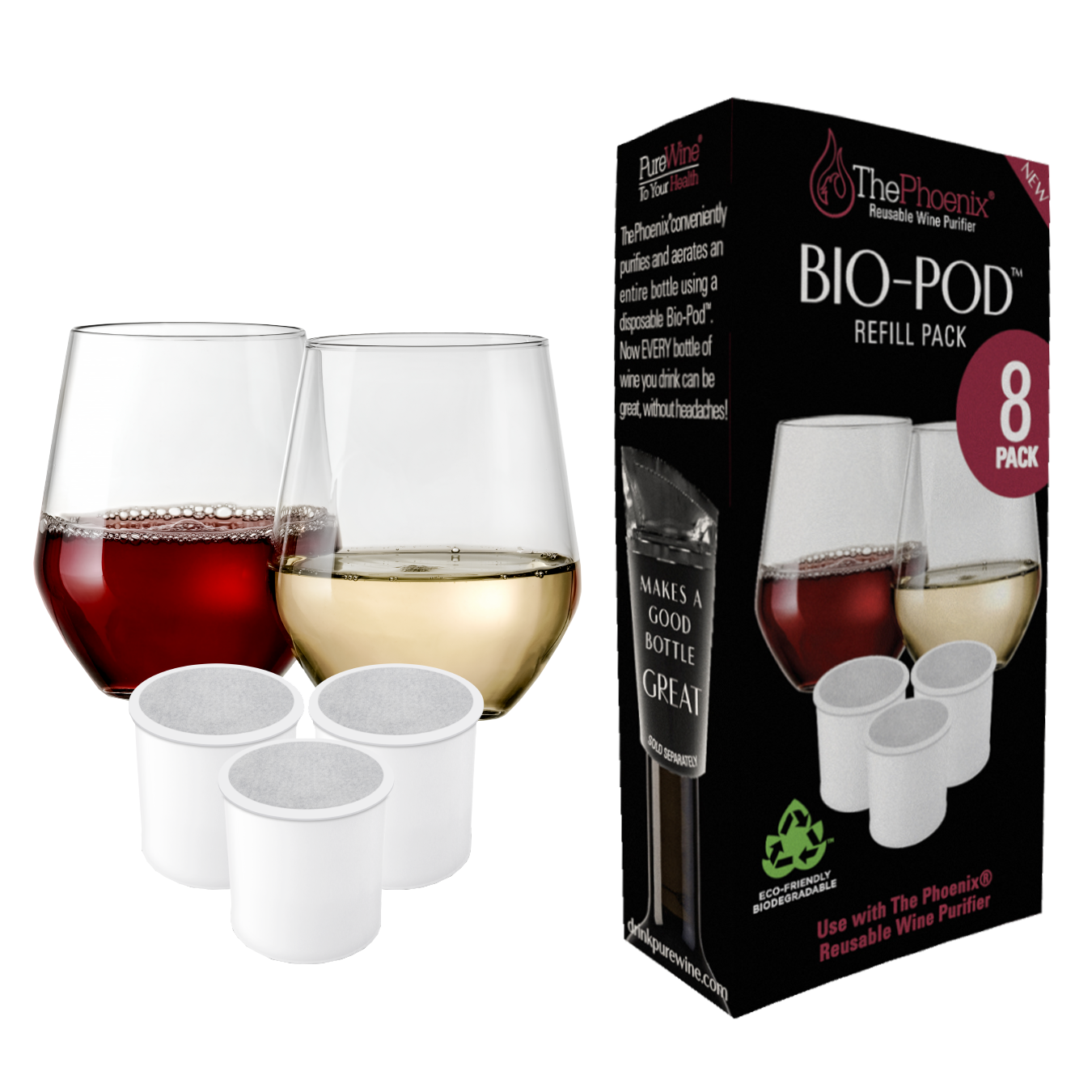
 (20 reviews)
(20 reviews)
